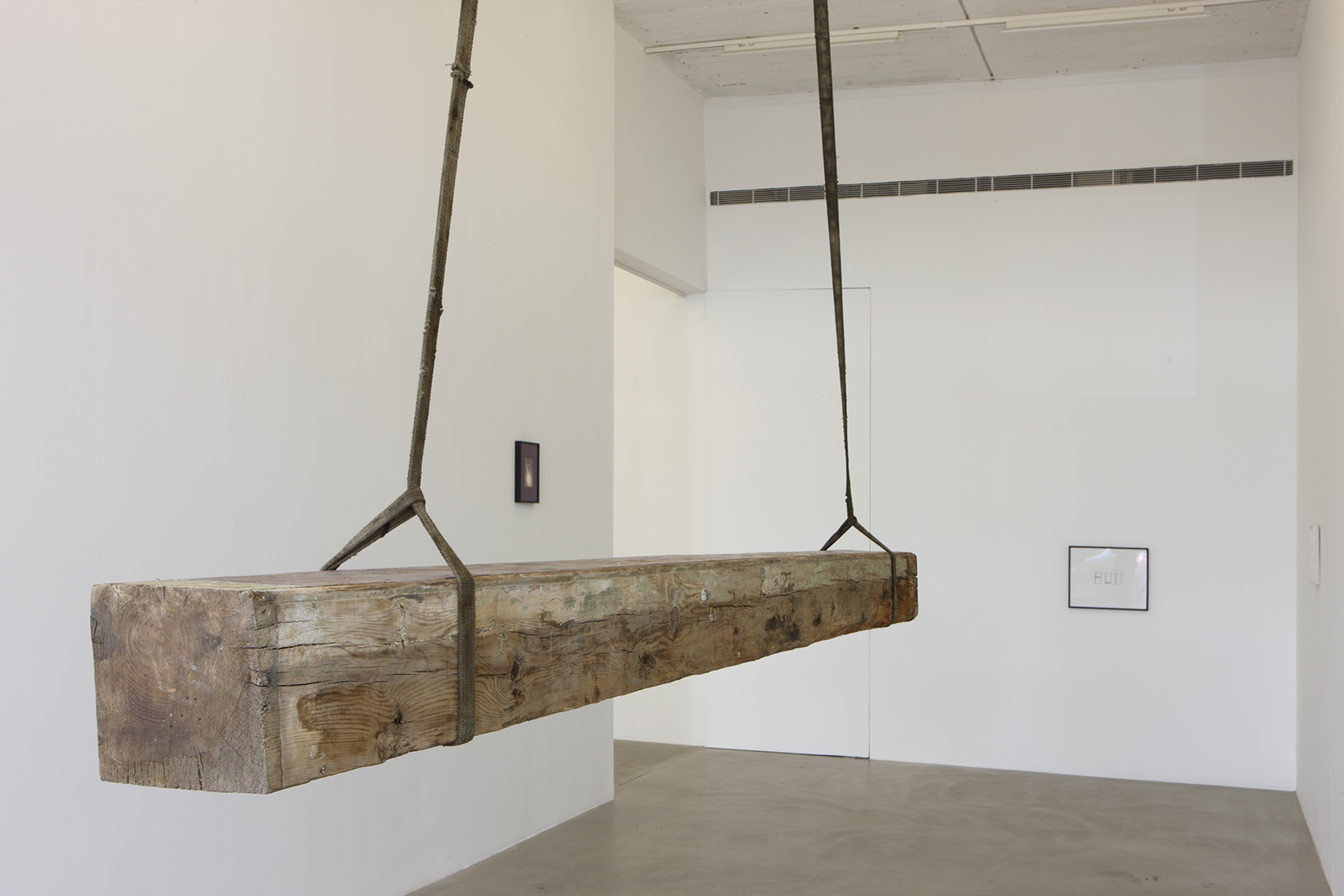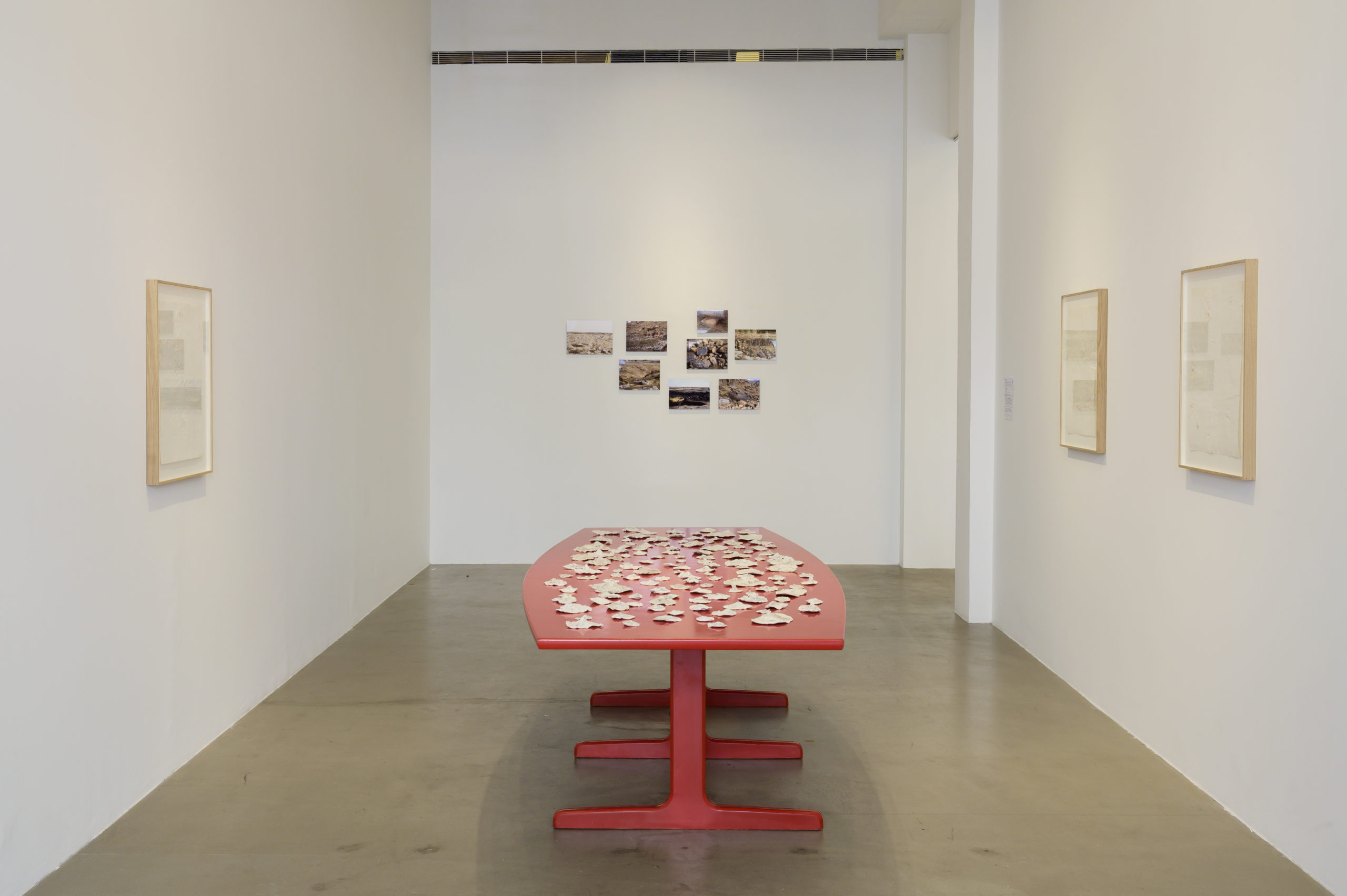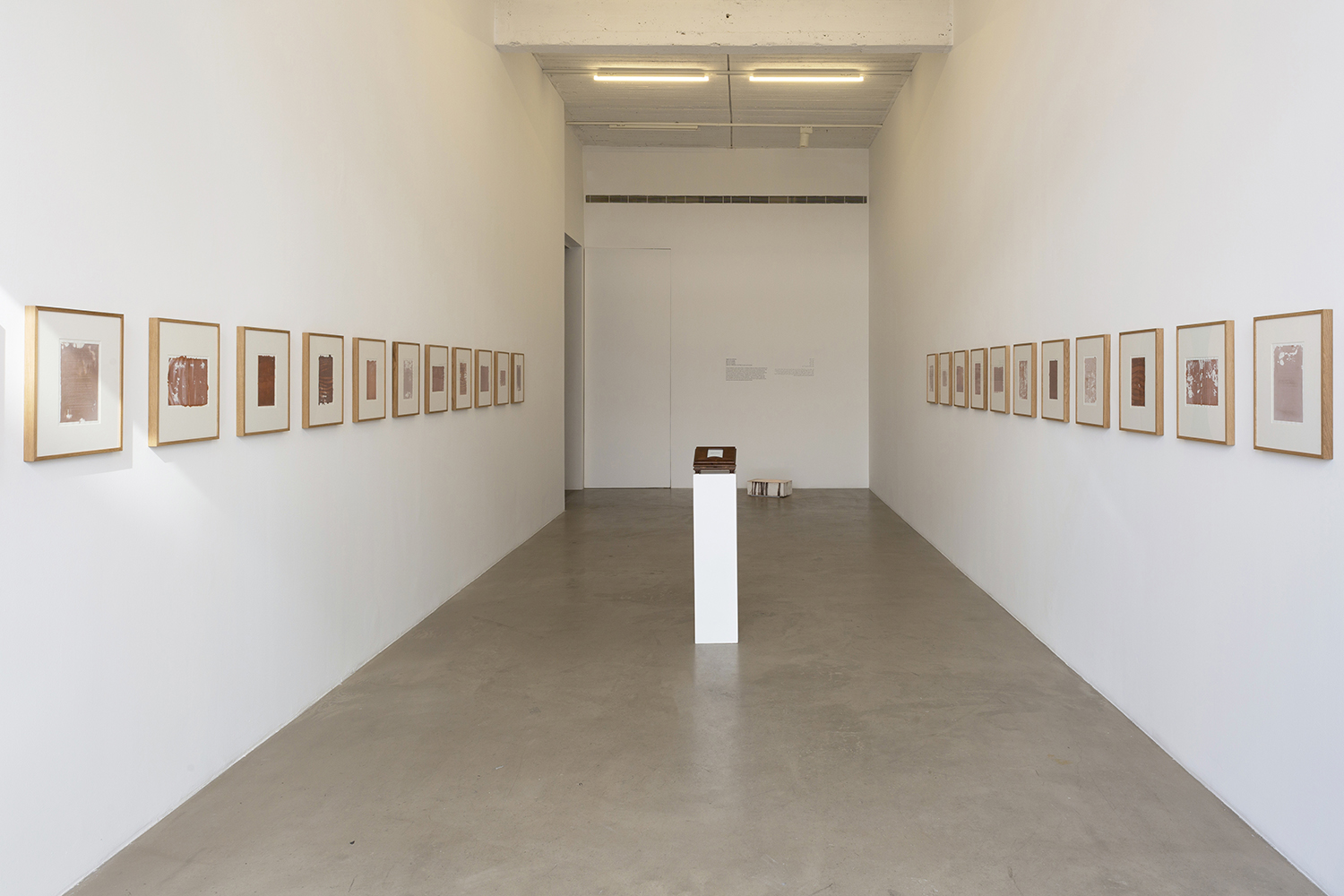Marfa’ Projects - a gallery intertwined with Beirut’s contemporary history
An interview with founder Joumana Asseily
Art spaces can often have an intimate relationship with their cities and have the possibility to invite inhabitants to reimagine their associations with particular locations. Marfa’ Projects in Beirut is a gallery that has been able to do this. It has moved past initial conservative remarks about the impracticality of having a space for art in an abandoned garage near the entrance to the port to becoming a key location point within the arts ecosystem in the city.
The beginning of the revolution in 2019 and the devastating explosion in August 2020 has compounded the challenges of building an audience and sustaining a gallery. SOUTH SOUTH had a conversation with founder Joumana Asseily what motivated the idea for Marfa’ Projects, its connection to its city and the importance of persevering through these trying time.
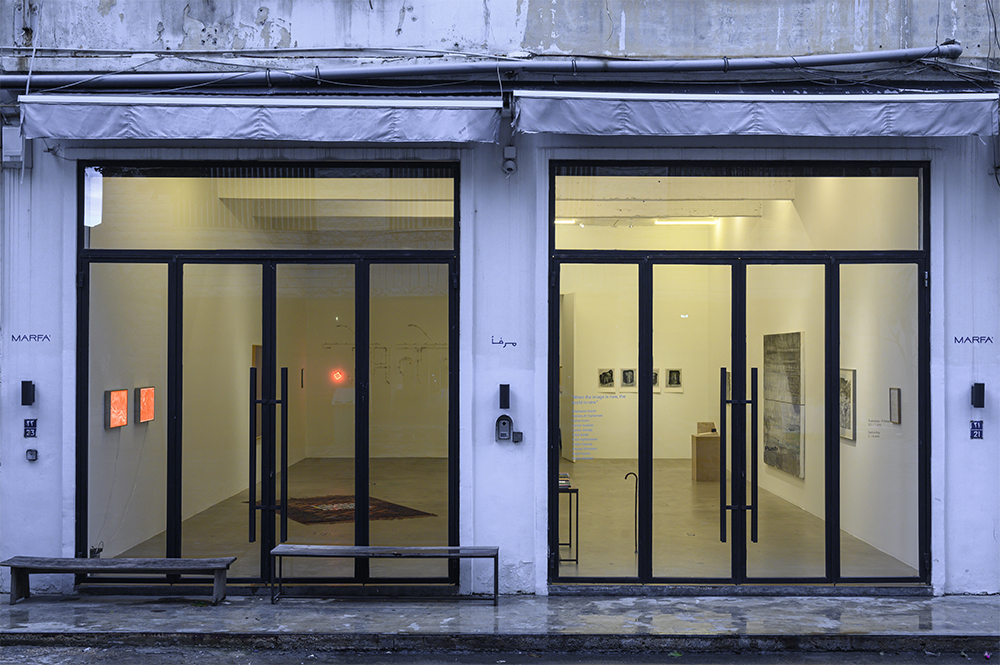
External view of the last group show at Marfa’ before the blast. When the image is new, the world is new, 2020. It included all of the artists that Marfa’ represents. Image courtesy of Marfa’ Projects.
SOUTH SOUTH (SS): Could you please share your own journey within the art world and how the idea for Marfa’ Projects came to be?
Joumana Asseily (JA): My journey within the art world started in college in Paris where I attended Penninghen, Academie Julian, and studied art and architecture. I spent several years abroad between LA and Paris, before finally returning to Beirut in 2006 where I discovered a fascinating cultural scene. 2006 was a difficult year. To really get us settled it took us 3 years, back and forth between Paris. I needed a reason to believe I could make it in Beirut. I started looking at the art world and discovered a fascinating cultural scene. I met [curator] Christine Tohmé and [artist] Lamia Joreige. Lamia is one of my artists today but at the time co-founded the Beirut Art Center. I supported shows such as that of Penone, Kader Attia, and Richter. Christine invited me to join the Board of Ashkal Alwan [Non-profit organization (est. 1993) committed to artistic practice, production, research, and modes of study.] where I assisted in setting up a library. This library was a necessity because at the time Beirut did not have a specialised art library. During this time I met amazing artists and other arts practitioners. I also noticed that Beirut lacked spaces to show good art and I decided to open a space. This was after many exchanges and conversations with people in the art world in Beirut and abroad who knew the local scene very well. At first I was not sure about it being a commercial space. My impulse was ignited by a primary idea – to show good art. And then one show after another, one artist after another, the space transformed into an art gallery.
SS: You founded Marfa’ Projects in 2015. Could you share more about what the art scene looked like in Beirut at the time and why it was a significant moment to open up this new space?
JA: The art scene was burgeoning, showing many great artists from here and internationally, great work was emerging, you could feel a will, a desire to produce, to show.
In October 2015, Sursock [Museum] was finally reopening after several years of closure, Aïshti was launching it’s foundation, Home Works was happening in November, and I felt that it was a good moment to launch Marfa’.
It’s actually funny how things sometimes suddenly fall into place. I had found the space in March and did a marathon to fix it- it hadn’t been used for 50 years! I had a specific project by Vartan Avakian’s in mind for the opening. He, like many artists we work with, had exhibited abroad or in group shows, but had not had the opportunity to present an entire project in a solo show. The project was on the Barakat Building, on Beit Beirut Beit Beirut [now a museum and urban cultural centre that focuses on the history of Beirut], a building that was partially destroyed during the war that separated Beirut from East and West. In the building you had famous studio photographs where people would go to have their photographs taken for passports, for their families, etc. He found the studio while the building was being restored. In this photographic space Vartan found particles of photographs from the images that were destroyed. He took the silver particles of these photographs and scanned them. From the scans he made incredible images. In the particles is all the stories of the people who were in the photographs. He also created beautiful crystals that hold the story of the building. I loved the project about the building, it was something very poetic. It was about memory, and it was something that we hadn’t seen in Beirut. So I thought that was the perfect show to open Marfa’ Projects.
See more about Vartan Avakian’s show titled ‘Collapsing Clouds of Gas and Dust’ here
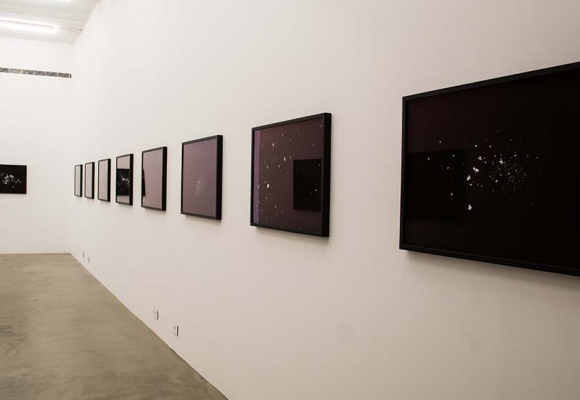
Vartan Avakian, Suspended Silver, 2015
Exhibition View
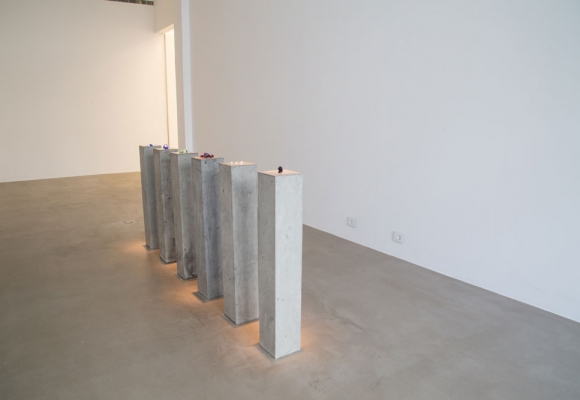
Vartan Avakian, Collapsing Clouds of Gas and Dust, 2015
6 concrete plinths
dimensions variable
A set of mineral crystals
SS: Do you see Marfa’ as having its own unique audience?
JA: When we opened in October 2015 it was a very special moment because you had the Aïshti Foundation opening so we were lucky to be opening around the same time as the international and local interest was drawn to the city. This buzz carried through into each exhibition we held at Marfa’. It drew all kinds of people including the more conservative viewers telling me that what we were producing was nonsense. But we built an audience of curious people.
There is a particular gesture that we do for our shows with the artists. We produce small publications that either the artist or a commissioned writer writes. I want people to understand each show and the work that the artists produce. These publications become the physical residue of each exhibition, and go beyond installation images as a way to preserve and document what took place. The artists decide on the content. This also helped in building our audience.
SS: How would you describe the arts ecosystem in Beirut at the moment, and how do you position Marfa’ Projects within this?
JA: Since its inception Marfa’ has contributed to widen the existing ecosystem. It has given a new and different voice to the present community. I’ve come to realise over time that it was something essential and needed in the city. There are always new and very interesting voices to be heard and listened to, different perspectives and approaches to present. Right now the art ecosystem has been severely shaken. It started with the revolution in October 2019, and the massive economic crisis we are going through. The country is drowning from 30 years of massive corruption. And the catastrophe of August 4 [2020 – the explosion in Beirut] almost finished killing the entire scene. It’s been very painful to watch. We were taken in an amazing whirlwind, relentlessly and passionately defending the projects and works of our artists here and abroad. We got lucky to travel early enough and join the fairs circuit, and suddenly it was as if someone turned off the lights.
SS: 2020 was a tumultuous year on multiple fronts. We are terribly sorry about the damage and suffering caused by the explosion in August. Would you be open to sharing more about how this affected Marfa’ Projects and how you are working towards reimagining the space now?
JA: The scars are still vivid. The worst part is that nothing has been done from our government. Not a minute of silence, no memorial, no financial or any other help from their part.
We were closed the day before, because the country was going into lockdown. We were just lucky not to be there. The gallery is 500m away from where the blast [took place]. It’s all destroyed. We had a group show then. Seeing what has become of the port, the people who worked there at that time, what has become of Beirut and its inhabitants tore my heart apart, and it is still hurting.
I’ve been extremely touched by the support the international art community is giving us. So heartwarming, and that is one of the motivations to continue. And SOUTH SOUTH is a huge lift for us. The other motivator is the fact that we need to keep fighting for our cultural sector and the survival of our ideas. How do we move on otherwise? Without that it is the complete death of the city. We have started planning how to rebuild ourselves and hope to open in Spring. One of the challenges will be to bring people back in the port!
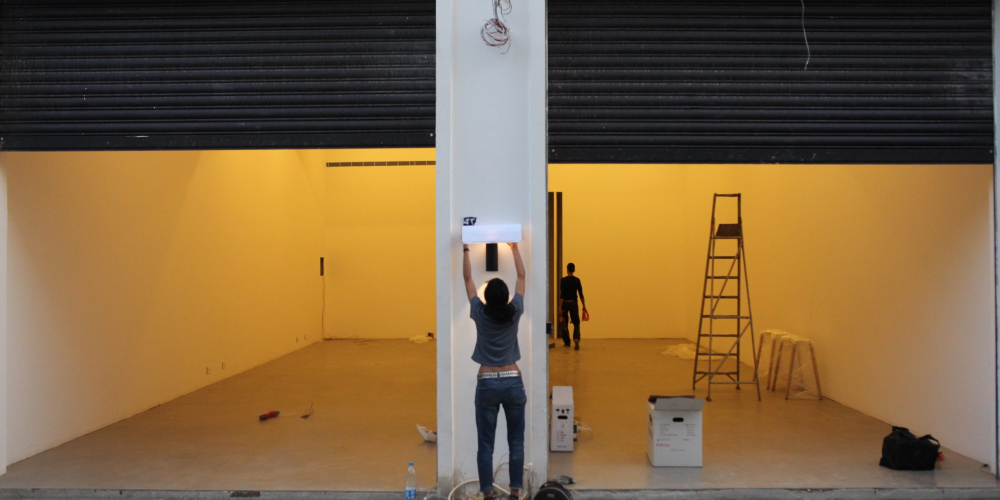
Image from Marfa’ Projects
SS: Could you please share more about the significance of naming the space Marfa’ in relation to its location, and ideas around situatedness, connection to space and ideas of locality?
JA: ‘Marfa’ means port in Arabic. It’s the name of the street and area we are in. We are located at the entrance of the port, around us it’s all customs buildings, shipping and trading. It is extremely busy during the day, an unceasing flow of trucks with merchandise and couriers on scooter bikes. People yelling, transporting.
The space has a very special energy; openness to the rest of the world, exchange, ideas burgeoning. The gallery is an old modern structure built around the 50s. It is two old garages that were unused for over 50 years. It made so much sense to open there. Location is one of the “things” that was crucial for my decision. It’s that kind of thing when you find a place that speaks to you and makes sense and makes you want to do something meaningful with it.
SS: Openness and exchanging ideas is part of the foundation for Marfa’. How does this filter into the shows you produce?
JA: Ideas trigger debate, conversation, discourse. This is something we need because what is happening today in our country and what is happening in a lot of countries. We need to be open to discourse. We are struggling. It is very important to create something, to provoke something and, in a way, to counterattack through these mechanisms of creative practice. This is what matters as part of the structure of Marfa’ Projects.
It is very important to create something,
to provoke something
and, in a way,
to counterattack through these
mechanisms of creative practice.
Art can never
be disconnected from
the socio-political environment.
SS: Art spaces in the Global South are often labeled or imagined as operating within the periphery. However, within our regions we form our own centres and hybrid ecosystems. Could you share your thoughts on this?
JA: Art can never be disconnected from the socio-political environment. The Global South today is in a challenging phase of transformation and conflicting cultural battles. From Mexico to South Africa, the disintegration of the superpower worldview coupled with climate change are bringing out the very strong emotions that fuel art creativity, discourse and debate.
Art in the Global South isn’t so much as operating within the periphery, but within the challenging forces that are by definition outside the classical centers of power. Often art doesn’t look for globalism, instead it looks inwards. Sometimes it is to affect internal change with activism, anger or even despair. At other times this introspection becomes a much deeper study of concepts disconnected from the surrounding ecosystem, where the artist decides to focus away from the surrounding chaos into their own worldview.
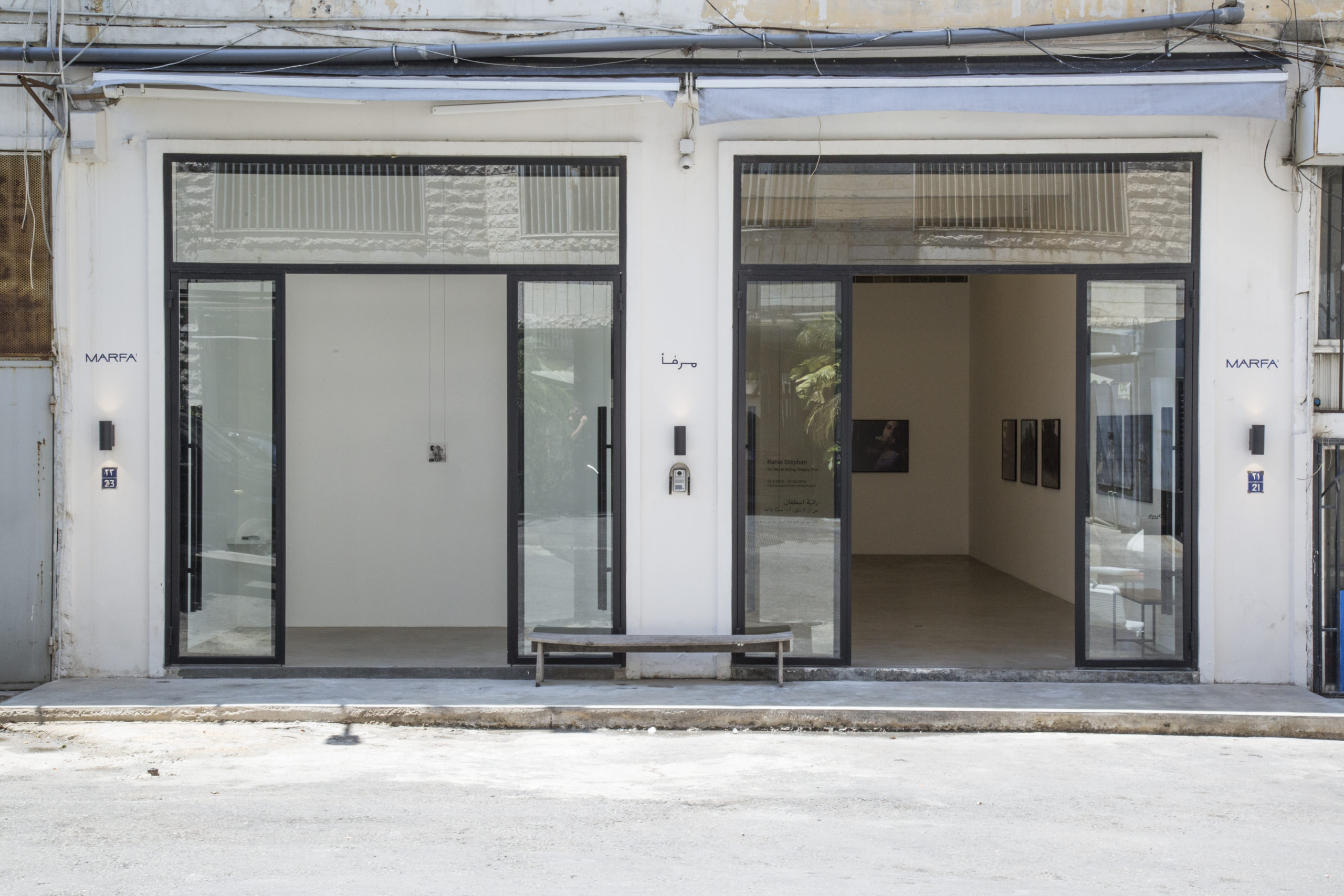
Rania Stephan’s solo exhibition at Marfa’. On Never Being Simply One, 2016. External view. Courtesy of Marfa’ Projects.

